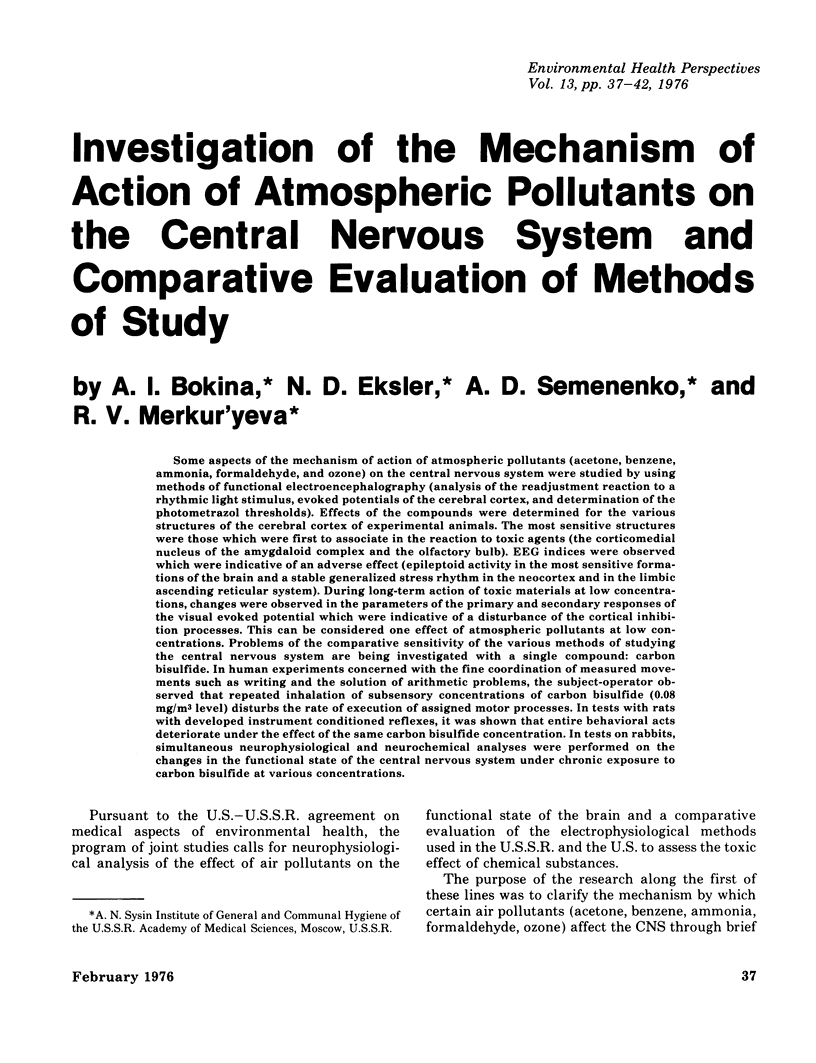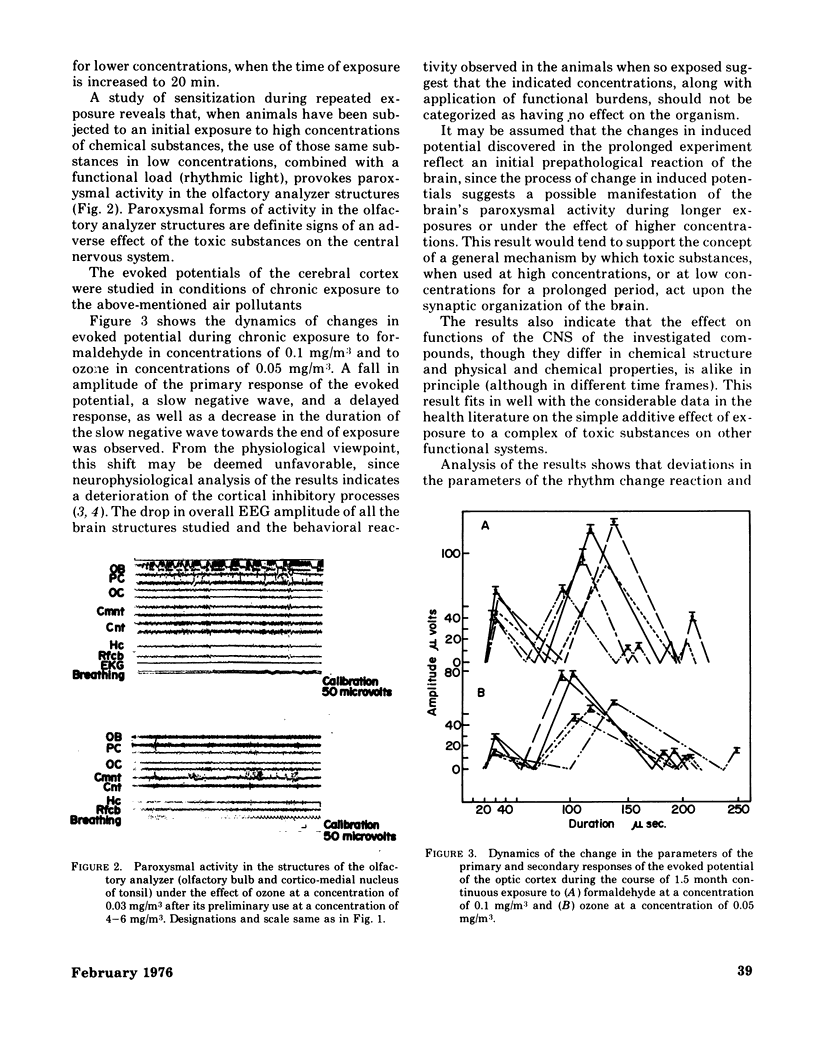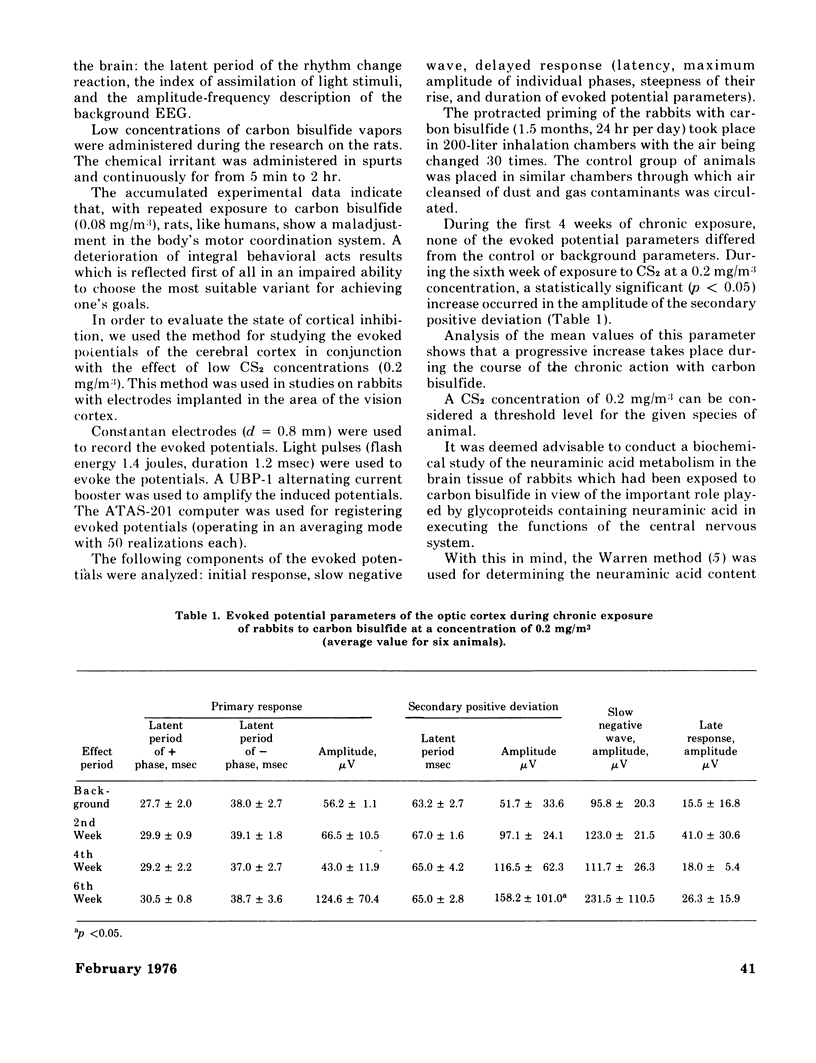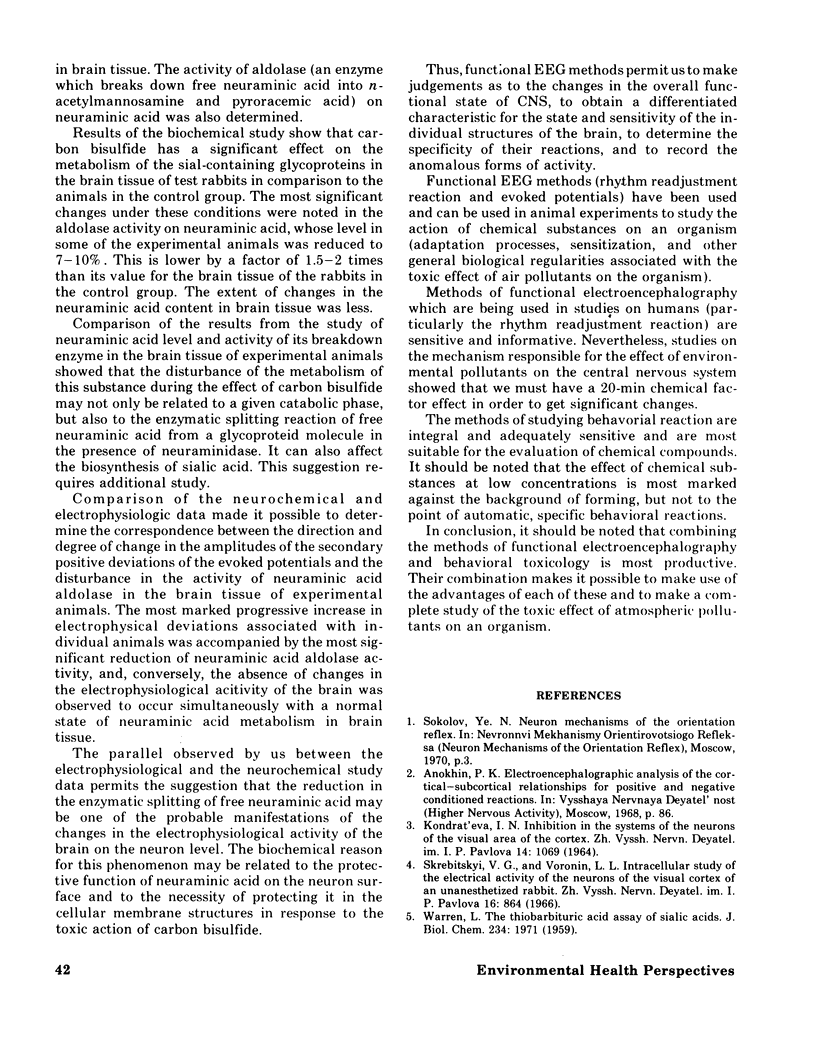Abstract
Some aspects of the mechanism of action of atmospheric pollutants (acetone, benzene, ammonia, formaldehyde, and ozone) on the central nervous system were studied by using methods of functional electroencephalography (analysis of the readjustment reaction to a rhythmic light stimulus, evoked potentials of the cerebral cortex, and determination of the photometrazol thresholds). Effects of the compounds were determined for the various structures of the cerebral cortex of experimental animals. The most sensitive structures were those which were first to associate in the reaction to toxic agents (the corticomedial nucleus of the amygdaloid complex and the olfactory bulb). EEG indices were observed which were indicative of an adverse effect (epileptoid activity in the most sensitive formations of the brain and a stable generalized stress rhythm in the neocortex and in the limbic ascending reticular system). During long-term action of toxic materials at low concentrations, changes were observed in the parameters of the primary and secondary responses of the visual evoked potential which were indicative of a disturbance of the cortical inhibition processes. This can be considered one effect of atmospheric pollutants at low concentrations. Problems of the comparative sensitivity of the various methods of studying the central nervous system are being investigated with a single compound: carbon bisulfide. In human experiments concerned with the fine coordination of measured movements such as writing and the solution of arithmetic problems, the subject-operator observed that repeated inhalation of subsensory concentrations of carbon bisulfide (0.08 mg/m3 level) disturbs the rate of execution of assigned motor processes. In tests with rats with developed instrument conditioned reflexes, it was shown that entire behavioral acts deteriorate under the effect of the same carbon bisulfide concentration. In tests on rabbits, simultaneous neurophysiological and neurochemical analyses were performed on the changes in the functional state of the central nervous system under chronic exposure to carbon bisulfide at various concentrations.
Full text
PDF





Selected References
These references are in PubMed. This may not be the complete list of references from this article.
- WARREN L. The thiobarbituric acid assay of sialic acids. J Biol Chem. 1959 Aug;234(8):1971–1975. [PubMed] [Google Scholar]


